Women in Indian politics may win elections, but they can never win the battle of perceptions. If they dress in western wear, as newly elected Trinamool Congress MPs Mimi Chakraborty and Nusrat Jahan Ruhi Jain did when collecting their passes for Parliament, they are trolled. If they switch to sari-sindoor-chooda and salwar kameez when taking oath, they are still trolled.
Women politicians, already battling invisibility of numbers, also have to fight stereotyping. They are all expected to fit into a particular sanskari format. Anyone who veers from that is subjected to “lookism”.
Consider the short career of Moon Moon Sen in the Lok Sabha. The former actress, known for her stylish blouses and byloom saris, had this written about her in 2014 in India Today: “It’s easy to see that film actress and Trinamool MP from Bankura, Moon Moon Sen, is the new centre of attraction in Parliament. MPs across party lines are heard discussing her “dressing sense”. Some members even admit off the record that they “wait for her to come to the Parliament just to see what she is wearing today”.
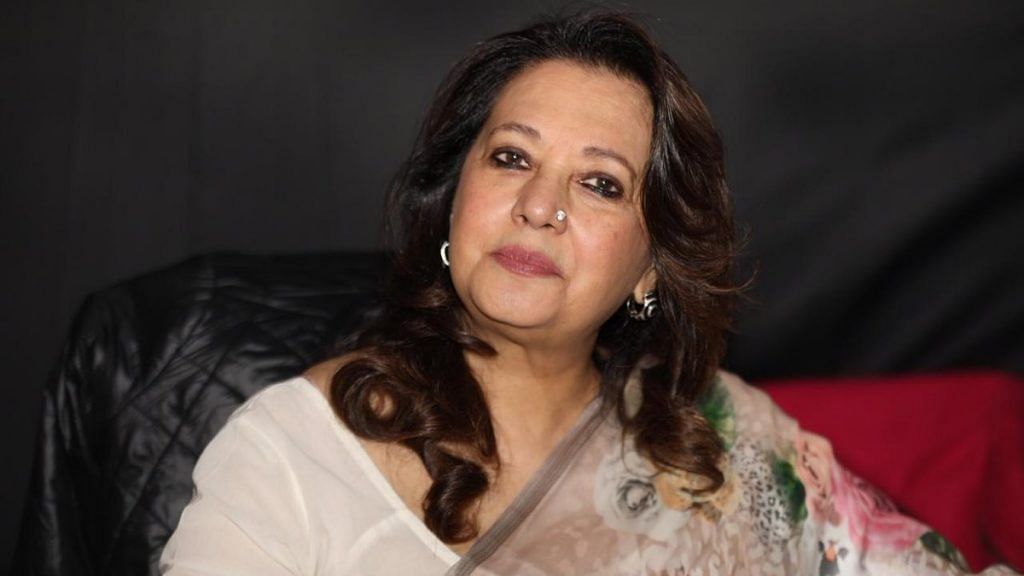
Also read: Politicians like Rahul and Modi seem adept at spotting sexism in everyone but themselves
A political uniform
Older women in politics have developed a uniform of sorts, which they wear almost as armour, whether it is Sushma Swaraj and her waistcoats-on-saris or Harsimrat Kaur Badal and her dupatta and salwar kameez. Like the corporate uniform of an Indra Nooyi or the political pantsuits favoured by Angela Merkel and Hillary Clinton. They act as a constant, cutting out the element of surprise, and leaving the audience to focus entirely on the message, not the medium. The lengths women go to in a patriarchal world.
The new generation of women across the world is trying to change that, whether it is Alexandria Ocasio-Cortez in the US Congress or Nusrat Jahan in Lok Sabha, who can carry off a peplum pantsuit with the same élan as a Tangail sari and sindoor.
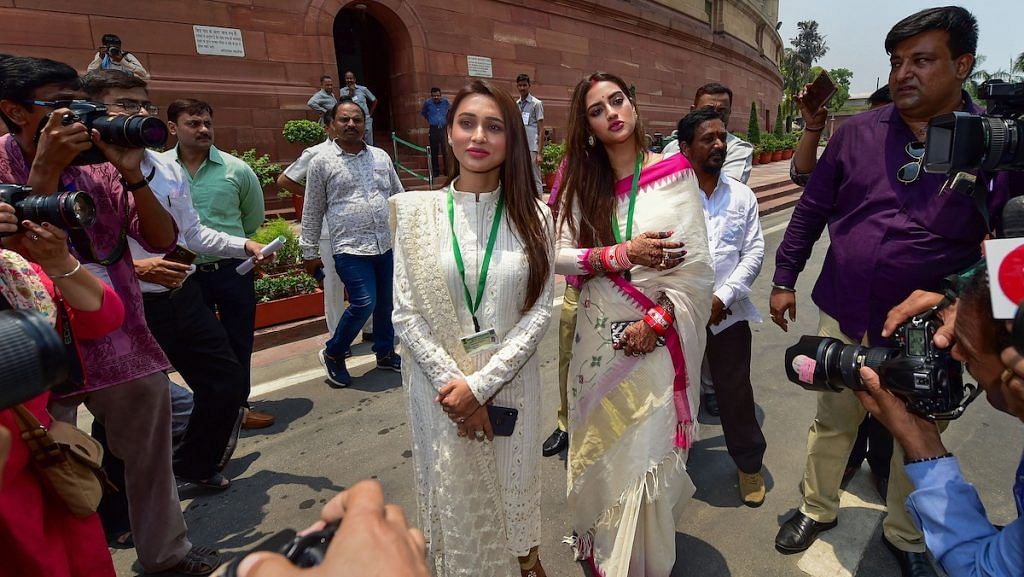
The ‘parkati auratein’
If women had a career before politics, they are called names— remember Congress’ Sanjay Nirupam saying BJP MP Smriti Irani used to do “thumkas” on TV till recently. And if they show any trace of individuality, like on-off politician Priyanka Gandhi Vadra, they are attacked viciously—remember BJP MP Harish Dwivedi saying: “Jab Priyanka Gandhi Delhi mein rehti hain toh jeans aur top mein rehti hai, aur jab shetra mein aati hain toh saree aur sindoor laga kar aati hain (When Priyanka Gandhi stays in Delhi, she wears jeans and top. But when she visits rural areas, she comes wearing a saree and sindoor).”
Much before Jadavpur MP Mimi Chakraborty and Basirhat MP Nusrat Jahan created a flutter in Parliament with their attire, there was Tarkeshwari Sinha, elected four times to the Lok Sabha, in 1952 when she was all of 26, in 1957, in 1962, and in 1967.
Having participated in the Quit India movement as a teenager, she went on to do her post-graduation from the London School of Economics, but read about her now, and all you will hear is how she was the “Glamour Girl of Indian Politics”. Even her well-wishers like late economist Ashok Mitra wrote this in her 2007 obituary in The Telegraph: “She was the only deputy minister at the time to break out of the dark chamber of anonymity. Not that the calumny-mongers decided to take a rest, they sneeringly referred to her hair-do and the heavy French perfume she wore. The same crowd, however, had not a word to say about the attar exuding from the frame of Satya Narayan Sinha, also from Bihar, Union minister for parliamentary affairs for a long time.”
Mentioned in Katharine Frank’s book on Indira as one of Feroz Gandhi’s girlfriends (Indira: The Life of Indira Nehru Gandhi, 2001), there were also rumours about her closeness to Morarji Desai, to such an extent that journalist A.J. Philip once asked her about it when travelling with her to a hospital she had made in memory of her brother Capt. Girish Nandan Singh, an Air India pilot who died in an air crash. Philip writes: “During the return journey, I summoned up courage to ask her about her insinuated closeness to Morarji Desai. ‘We became Central ministers on the same day. He trusted me and I trusted him. When Lal Bahadur Shastri died, I felt that he should have been elected Prime Minister. There was nothing more to our relationship,’ she replied in a matter of fact manner.”
Tarkeshwari Sinha was perhaps one of the earliest “parkati auratein“, to use Sharad Yadav’s infamous descriptor of women with short hair in Parliament in 2014.
Also read: Indian women a step closer to breaking glass ceiling in politics
The Sharad Yadav syndrome
Yadav is possibly the unelected president of the Stale, Male, Fail Club of Those Who Can’t Cope With Women in Public Life.
Even as recently as 2018, he had this to say about former Rajasthan chief minister Vasundhara Raje: “Vasundhara ko aaram do, bahut thak gayi hain, bahut moti ho gayi hain, pehle patli thi. (Give Vasundhara some rest, she is very tired, she has become very fat, she used to be thin earlier).” It is difficult to judge which of this serial offender’s remarks is worse— try this one for size from a Parliament debate in 2015: “The bodies of women from the south are as good as they are beautiful. The women in our region are not as good as those [in south] at dancing.”
Most other male politicians don’t fare much better. It starts at the top. Prime Minister Narendra Modi is often caught on the wrongfoot when it comes to speaking on women from other parties, from alluding to Sonia Gandhi as Congress’ “vidhwa” to referencing Surpanakha while describing former MP Renuka Chowdhury’s laughter. Even Vice-President M. Venkaiah Naidu referred to Chowdhury’s weight in his comments on her farewell speech in Rajya Sabha, when he said: “My simple suggestion is, reduce your weight and make efforts to increase the weight of the party.”
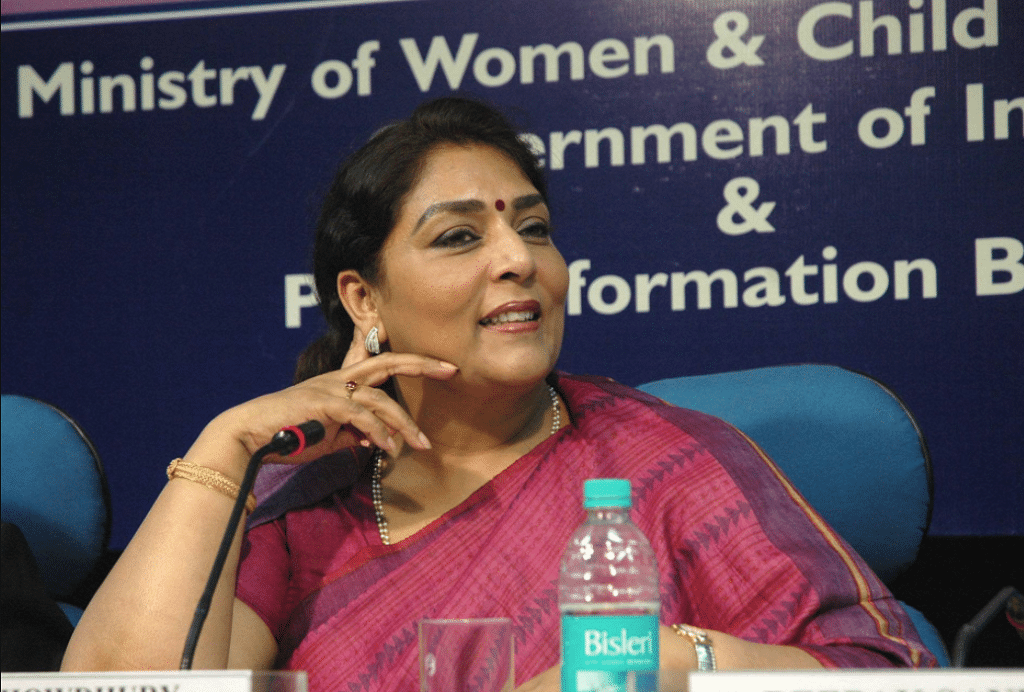
Also read: More women are entering Indian Parliament but at the cost of SC, ST men
Developing skin of a rhinoceros
No doubt Nusrat Jahan Ruhi Jain and Mimi Chakraborty will find themselves subjected to such casual sexism. Former JP Morgan banker Mahua Moitra, now MP from Krishnanagar, has lived with this ever since she joined the TMC. As MLA from Karimnagar, from where she was elected in 2016, there would be as much interest in her Bobbi Brown eyeliner and Louis Vuitton handbag as in her work. Immediately after her searing maiden speech in the Lok Sabha went viral, Right-wing unofficial dirty tricks department put out a video of her ostensibly assaulting a woman security guard in Silchar, Assam.
Expect much more on Moitra, who has already announced: “I have survived on a trading floor. I have the skin of a rhinoceros.”
For independent journalist Malini Banerjee, who has observed all three women from their days in West Bengal, it is a welcome change. As she says: “I have never noticed Mohua Moitra’s eyeliner but have taken note of her very on-point nails and a perfect blowout every time. So often we see politicians stick to the same old bun or boring short hair that it’s a refreshing change to see these women walking into Parliament with a sassy flick of perfectly blow-dried hair.” Perhaps in time, they can even exchange notes on ‘How Best to Toss Your Hair’ with unofficial members of the Elite Silver Foxes Club – the Shashi Tharoors and Jairam Rameshes of the world.
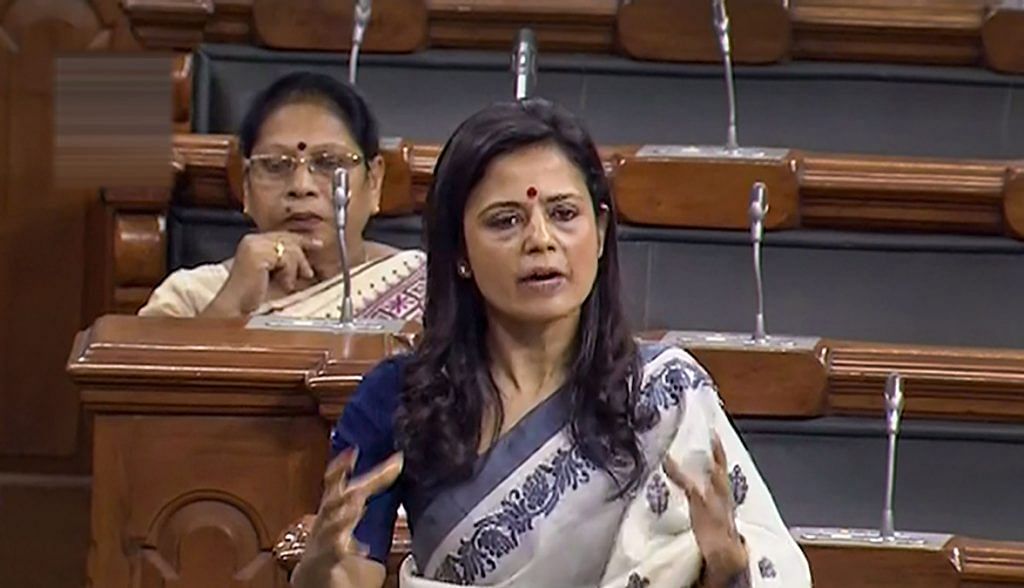
Also read: ‘Memsahib’ Mahua Moitra is bringing what Indian Parliament never had: a call out culture
Following Sarojini Naidu
There was a time when Mahatma Gandhi urged all men and women to wear khadi to deliver the poor from the binds of the rich, and create a moral and spiritual bond between the classes and the masses. As he wrote in Young India in 1927, khadi “restores to the poor somewhat of what the rich have taken from them”. Even then, Indian women politicians knew how to stand up and stand out.
As Lisa N. Trivedi writes in Clothing Gandhi’s Nation: Homespun and Modern India, Sarojini Naidu didn’t regularly wear khadi because “she felt it was aesthetically inferior to the traditional textiles of India, which Gandhi had cautioned were too costly for the average person to afford and promoted consumer desire”.
India’s New Age women politicians have a fine history to live up to.
The author is a senior journalist. Views are personal.


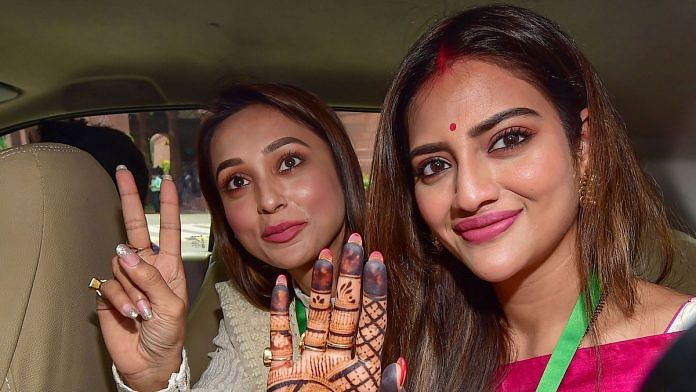

On one hand Nusrat force Nikhil Jain for nikah ceremony proceeded by conversion and taking name Nayeem khan and other side she tried to fool Hindus by wearing saree and sindoor, this dhongi peoples are dangerous.
Brilliant and lovely well-researched post. It would have been better if a line about the use of Urdu couplet by Ms Tarkeshwari Sinha in the debate, her stylish banter, parliamentary skills of Ms Smiriti Irani and performance of actress Nargis Dutt, Hema Malini and Jaya Prada would have been incorporated in this lively and engaging post. Moreover, the dress style of Mrs Indira Gandhi and the simplicity of Dr. Sushila Nayyar and Maharani Vijaya Raje Scindia besides the style of the most beautiful woman Maharani Gayatri Devi in the parliament are too missing.
You proved it on the floor of house Mam Mahua Moitra. We can fly the fighter, pilot a locomotive, and so on. The male dominated society may not be able to digest but days are not far off when my sisters and daughters will prove their metal in all fields. Well done!! We feel proud of You. Keep it up.
Keep going you both! Look forward to your leadership (in style), and hope you can remove the boring male toxicity in the Parliament complex. Wait for the day when there is a men’s reservation bill proposed by you.
Strange!!!
On the one hand, women preach to fellow women to ignore trolls and stand firm in life. Yet women get touchy and write articles on trolling. Playing victim and yet preaching others to be badass women is paradoxical.
Trolling is an occupational hazard for people in public life.
A more pleasing sight than Sadhvi Niranjan Jyoti and her sister, Pragya Thakur.
While patriarchy is a fact , the instances of the comments made by politcians are nothing but humorous banter . Dress and scent , if objects of derision in humorous way should be taken as such , with humor . It is the nature of human beings to add infinitesimally small things to weighty issues to make it weightier but in fact does the opposite . I was once reading an article about Warren Bufett by a leading foreign journalist who was castingating buffett for his joke on ladies which went some what like this , if a lady says no , it means maybe , if she says maybe it is yes and is she says yes , she is no lady at all .Now it is light hearted banter , may be not politcally correct , but highlighting such comments would do no good , though i must admit it is entertaining ,